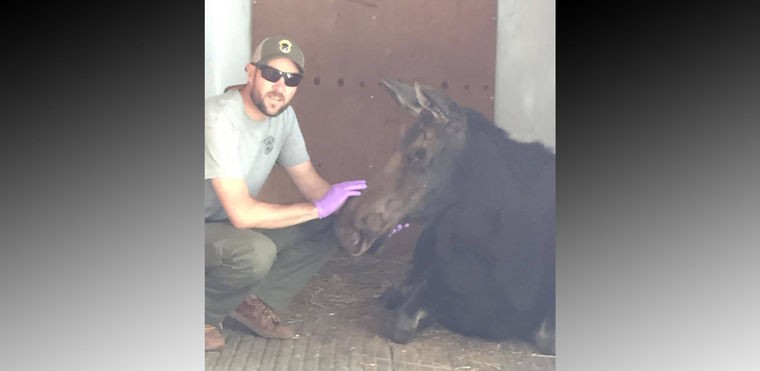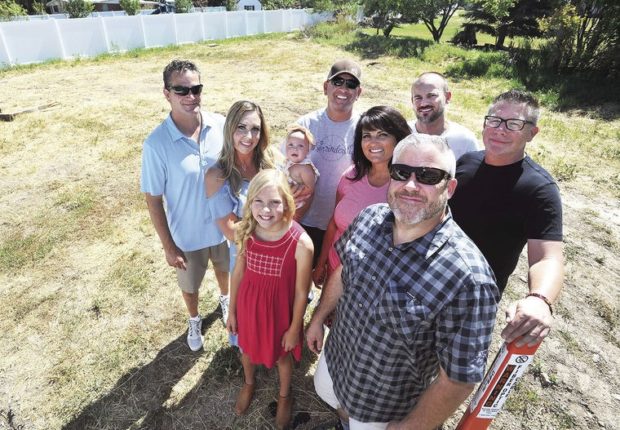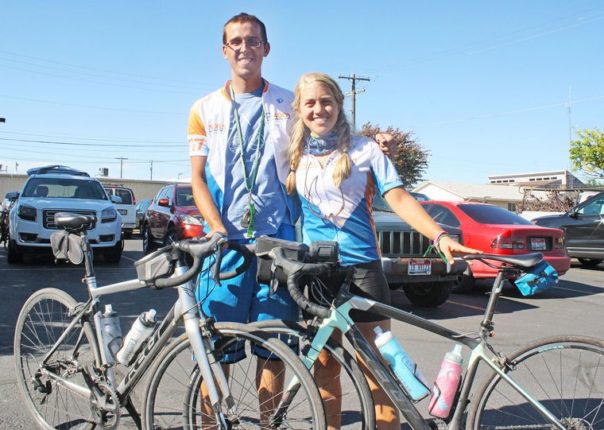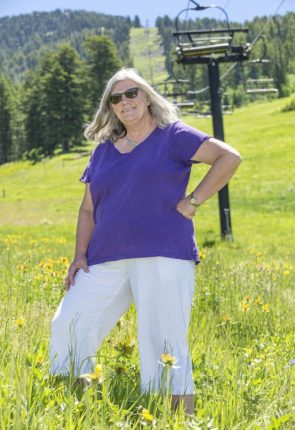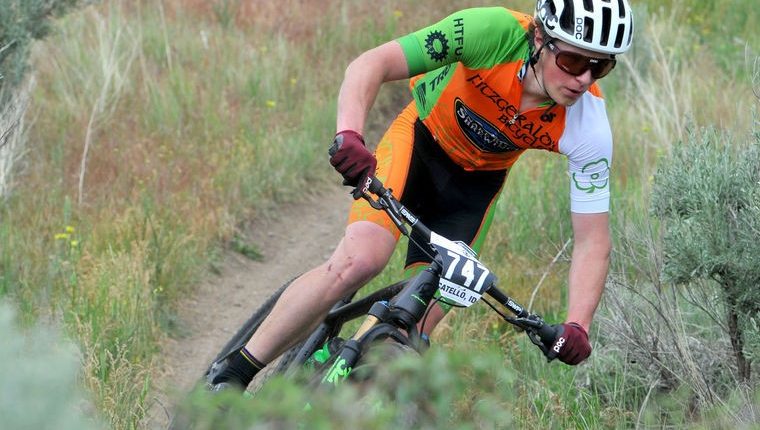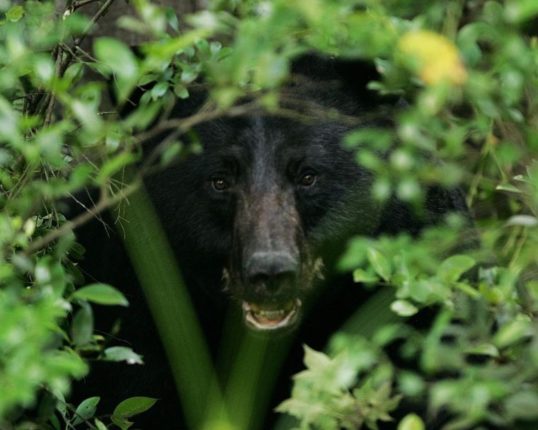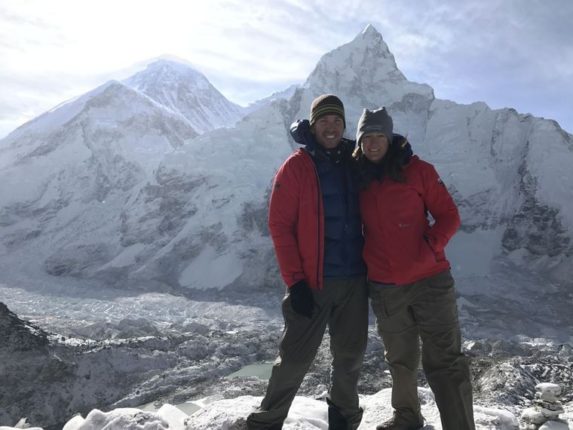Lisa King’s journey to the world’s tallest mountain began in 2015, when she received news nobody ever wants to hear.
Her doctor said she had breast cancer.
The diagnosis left the mother of two reeling. There wasn’t a history of cancer in her family. Plus, she always took extra steps to ensure she was living a healthy lifestyle, even going as far as using aluminum-free deodorant.
Lisa, who lives in Idaho Falls, also had concerns about what would happen to her husband, Kevin, and their two young girls, Clara and Elena, if the illness got the best of her.
“It was a shock, that’s for sure,” she said.
Doctors performed a lumpectomy to remove the cancerous lump. Then King underwent radiation treatment for an agonizing seven weeks.
The doctors also gave Lisa the option of getting a mastectomy. Luckily, it wasn’t needed to rid the cancer from her body.
“I didn’t want to do it if I didn’t have to,” she said.
Now, approximately a year and a half later, the 43-year-old King is a bona fide cancer survivor.
Radiating Hope
As a registered nurse in the pediatric intensive care unit at Eastern Idaho Regional Medical Center in Idaho Falls, King works on the front lines of the health care industry. But her own health scare made her search out a way to help others fight cancer.
She found it with Radiating Hope.
Radiating Hope is a Utah-based nonprofit 501©(3) organization that raises money to provide cancer-treating radiation equipment to developing countries. What makes the organization different from other nonprofits is that it is geared toward mountain climbers.
Since she was a child growing up in western Pennsylvania, King has always been fascinated with mountain climbing. Before moving to East Idaho, she and her husband Kevin, a financial adviser with Edward Jones, lived in Colorado and would often hike up the state’s towering peaks.
“I’ve always been interested in mountaineering,” she said. “It’s always been on my bucket list to trek in the Himalayas.”
So when she discovered that Radiating Hope was going to take a group of cancer survivors to Everest Base Camp, located on Mount Everest, she jumped right in and began raising money for the organization.
The Kings were part of a group of 38 people from around the country who raised a total of $100,000. Of that total, Lisa and Kevin raised almost $15,000.
With EIRMC sponsoring her trip to Mount Everest, the Idaho Falls couple had punched their plane tickets to Nepal.
The Trek
With Clara and Elena staying with family, Lisa and Kevin’s big trip to Southeast Asia began on April 11. After spending two days in Kathmandu, the Kings left Nepal’s capital city with 35 others from Radiating Hope for the trek to Everest Base Camp.
The Kings would not be reaching the very top of Everest, which peaks at 29,029 feet. However, the hike to the base camp, which is located on the mountain at 17,575 feet, was a physically demanding journey in its own right.
With the help of a herd of yaks carrying their backpacks and gear, Lisa and Kevin made their way to the base camp via a long trail running up the side of the mountain. To the Kings’ surprise, the trail looked like rush hour, with local residents, yaks, burros and other trekkers often crammed side-by-side.
“When there’s a traffic jam on the trail, it bottlenecks with people and animals,” Lisa said.
Small villages dot the journey up the trail, and the Radiating Hope group would spend their nights at various teahouses along the way. One stop was particularly rewarding for the group.
In one of the teahouses, they met an elderly sherpa who is the last surviving member of Edmund Hillary and Tenzing Norgay’s legendary 1953 climb up Everest. On this ascent, Hillary and Norgay became the first climbers confirmed to have reached Everest’s summit.
“He answered our questions,” Lisa said. “He told us there were 400 sherpas who supported the group. It took those 400 sherpas 16 days to go from Kathmandu to base camp. They pushed wheelbarrows filled with their gear the whole way.”
After a few days of hiking, the base camp was within eyesight. But Lisa, Kevin and approximately 10 others from their group decided first to take a detour to Kala Patthar, a mountainous landmark that provides hikers a closeup view of Mount Everest. In those early morning hours, the group watched in awe as the sun rose over the world’s tallest mountain.
“That was our favorite time of the hike,” Lisa said. “We started the day out with a bang, but the day didn’t end well.”
Sickness
Everest Base Camp is used to help mountain climbers acclimate to the high-altitude conditions before they make their ascent to the top of Everest. Lisa said seeing the camp in person is quite the sight.
“It’s a city of tents that sits on a glacier,” she said. “There’s a thin layer of rocks on top of the glacier.”
However, not everybody in Lisa and Kevin’s group had finished the trek. During the hike, numerous group members had to stop and head back down when they began to suffer the telltale signs of high altitude sickness — nausea, headaches, fatigue, nose bleeding, shortness of breath and dizziness.
The lack of oxygen at such high elevations is well-documented to bring on this type of illness, which in turn can lead to either high-altitude pulmonary edema or high-altitude cerebral edema, both of which can be fatal.
Initially, the Kings were doing just fine at base camp. However, a bout of altitude sickness soon stuck Lisa. Because of the dangers posed by illness, a doctor at base camp told her she needed to descend the mountain by way of helicopter. Lisa did not take the news well.
“I cried when they told me I would have to go down the mountain in a helicopter,” she said. “I wanted to do the entire trek by myself.”
However, heavy snows had grounded the helicopter, so Lisa was put on oxygen and given medications to deal with the sickness. As she laid in her tent, she kept hearing something she described as both remarkable and terrifying.
“I heard more avalanches than I could count,” she said. “I kept laying in my tent telling myself that they built the base camp in this location for a reason, so we wouldn’t get buried under an avalanche.”
By the early morning hours, Lisa was feeling better, so she and her husband left the tent and went to watch a group of mountaineers ascend the nearby Khumbu Icefall, which is considered one of the most dangerous obstacles toward Everest’s summit.
Lisa remembered a particular story the last surviving member of the Hillary/Tengay expedition told her days earlier. When the sherpas first encountered the icefall, they had to descend to a pine forest near the mountain’s base.
There, they assembled makeshift pine ladders and hauled them back up Everest to bypass the Khumbu. Nowadays, permanent ladders have been constructed to aid mountain climbers past the treacherous icefall.
As the Kings watched the climbers’ headlamps glowing in the distance, Kevin collapsed. Now he was suffering from altitude sickness.
At daybreak, the Kings began their descent, though Kevin had to ride a horse a portion of the way down while being administered oxygen. Eventually, he felt better and was able to get back on his feet.
For Lisa, she was now able to cross off a line on her bucket list.
Treatment
One memorable part of the trip to Nepal for Lisa was a visit to a cancer treatment center in Kathmandu. The building was relatively new, having been constructed a few years ago.
It was a place where she saw how health care in third-world countries is drastically different than the medical care in the United States. Lisa said that per capita, Nepal’s population needs 100 cancer radiation machines. The country currently has eight, and two do not work.
“A lot of people in Nepal who have cancer die because they don’t have treatment available,” she said.
Groups such as Radiating Hope are working to change those statistics. For a cancer survivor like Lisa, it was important to see how the $15,000 she raised was going to positively impact places like Nepal.
“It was rewarding to see where the money was going,” she said.
Prayer Flags
According to Radiating Hope’s website, prayer flags were originally used by Tibetan shamans during healing ceremonies.
“As the fragile flags are blown in the high mountain winds, they slowly unravel, the threads blowing away into the wind,” the website says. “Each thread that unravels represents a prayer of hope, strength, and health for the person it honors.”
Whenever trekkers from Radiating Hope take on the challenge to hike up the world’s tallest peak, it is customary for each group member to bring 25 Tibetan prayer flags with them.
Each flag has a prayer for somebody back home who has been affected by cancer, whether it’s a survivor or somebody who lost a loved one to the illness.
Between the two of them, Lisa and Kevin brought 50 of these prayer flags representing East Idahoans who stared cancer directly in the face.
It is considered bad karma to hang a prayer flag unless it is done by a Buddhist lama. Unfortunately, when the Kings were at base camp, a lama was not present.
The flags were hung two days after the Kings left the base camp. Lisa said she is currently awaiting photos of the prayer flags from a Radiating Hope representative.
Now that those flags are blowing in the mountain wind, Lisa isn’t the only East Idaho resident affected by cancer to make a mark at the top of the world.

